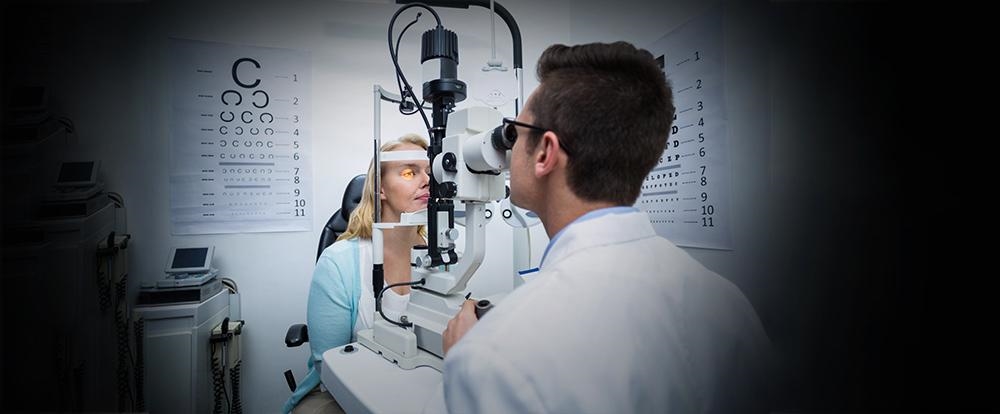Cornea Transplant

Overview
Our eyeball consists of cornea, the foremost transparent layer of the eyeballs; the anterior chamber located behind the cornea, in which the aqueous humor is found; the iris and the pupil forming the rear border of the anterior chamber; the lens located in a capsule in the posterior chamber; the fluid, called vitreous humor, filling the eye globe in the posterior chamber; and the optic disc, the optic nerve and the retina at the rearmost part of the eyeballs. The white part seen outside the eye is called the sclera.
The cornea – the foremost transparent layer of the eye – has two principal functions: focusing the light ray to the retina through the optic axis and protecting the eye against environmental factors.
If the smooth dome structure or the transparency is lost due to a reason whatsoever, it cannot properly focus the light, resulting in visual disorders. Keratoconus is the general term to imply any disorder in the cornea's watch glass or dome shape.
Corneal transplantation refers removal of a part of or the whole cornea and placement of a health cornea taken from a cadaver donor. Keratoplasty is the medical term used to refer this procedure.
Why is this procedure done?
The cornea is the utterly transparent tissue of the eye. Suppose the transparency is lost and the morphological appearance – watch glass or dome – changes (abnormal convexity or interior collapse) due to injury, scar formation, or edema. In that case, the cornea cannot properly focus the light.
Corneal transplantation is one of the treatment options for this wide array of corneal disorders.
Corneal transplantation or keratoplasty refers to surgical removal of the cornea that fails to fulfill the functioning of vision, followed by transferring a healthy cornea that is taken from a cadaver donor. Healthy corneas are removed from cadavers, who donate tissues and organs, and they are stored in eye banks.
Eye banks evaluate all donor corneas for all known contagious diseases, and the disease-free corneas are stored in unique solutions for a particular storage period. Hospitals authorized and licensed for corneal transplantation request donor cornea from eye banks for patients who require corneal transplantation. On the contrary to other tissue and organ transplantations, blood type compatibility does not apply to corneal transplantation, as the cornea has no blood vessels. Corneal transplantation is a treatment option for diseases listed below:
• Corneal edema
• Morphological disorders of the cornea (keratoconus)
• Fuch’s dystrophy
• Damage to the cells that line the cornea secondary to an infection
• Ocular injury
• Thinning of the cornea
• Other problems that leads to loss of corneal transparency
• Corneal ulcers
Risks
Although complication rate is usually for corneal transplantation, the possible risks of the keratoplasty are listed below;
• Infection
• Bleeding
• Glaucoma
• Cataract
• Retinal detachment
• Corneal edema
• Rejection of the donor cornea
• Reaction against the anesthetic agent
Although all possible measures that modern medicine allows are taken to prevent the occurrence of risks, it is by no means likely to warrant that the risks will be eliminated.
Our specialists will employ all practices to minimize the risk of complications. Our ophthalmologists will preoperatively inform you about the risks listed above and all other potential complications and address all your concerns.
Preparation
Your ophthalmologist will comprehensively examine your eye from all aspects. At this stage, a comprehensive examination is made to determine whether the corneal disease is associated with other eye disorders. Such evaluations aim for the best postoperative visual outcomes.
After it is verified that the surgery does not pose a risk, you will be asked to quit smoking if you are a smoker and to stop taking certain medications that increase the risk of bleeding. All other prescribed and over-the-counter medications, herbal products, and supplements will also be questioned, and you will be informed to continue or stop taking them.
You may need antibiotic eye drops or tablets before and after the surgery to eliminate the risk of postoperative infection. You will also be instructed to stop eating and drinking at a particular time before the surgery, and you should strictly follow this instruction to undergo the surgery at the scheduled date. Moreover, it is reasonable to plan discharge, post-discharge accommodation, and travel at this phase to manage the postoperative period better.
Surgery and early postoperative period
Corneal transplant surgery is usually carried out under local anesthesia.
After the local anesthetic agent is administered to numb the eye and the periocular area, you will be intravenously administered a soothing agent to calm down and relax. If your doctor deems it necessary in the light of preoperative data, the surgery can also be carried out under general anesthesia.
Full-thickness or partial-thickness corneal transplant surgery is performed according to the plan made by your doctor according to the results of the preoperative examinations. In full-thickness corneal transplantation, also called penetrating keratoplasty, the central part of the corneal dome is removed in the light of the corneal measurements made by your doctor.
The donor cornea is placed on this opening and stitched to the rest of the native cornea. In the partial thickness corneal transplantation, the outermost or the innermost layer of the recipient cornea is striped and replaced by the donor corneal graft. This technique is referred to as lamellar keratoplasty. Your doctor will plan and decide the best method for your corneal disorder and the amount of the cornea to be cut in the light of the preoperative examinations, and you will be preoperatively informed.
Your doctor may ask you to use antibiotics, anti-inflammatory tablets, and eye drops as a precaution. You should closely follow all advice of your doctor to prevent or minimize postoperative complications.
It would help if you kept your eyes clean, avoided rubbing and scratching your eyes, following your doctor's wound care advice, or were present for wound dressing visits after the surgery. Therefore, you should see your doctor at follow-up visits that will be informed to you, and you should also be ready to visit your doctor at particular intervals.
Results
Corneal transplantation improves visual accuracy in most patients. Rejection of the donor cornea is the major problem that requires attention after a corneal transplant surgery. It would help if you did not ignore visiting your doctor at regular intervals to monitor the rejection of the cornea and treat visual disorders that may occur after the transplant surgery.




















